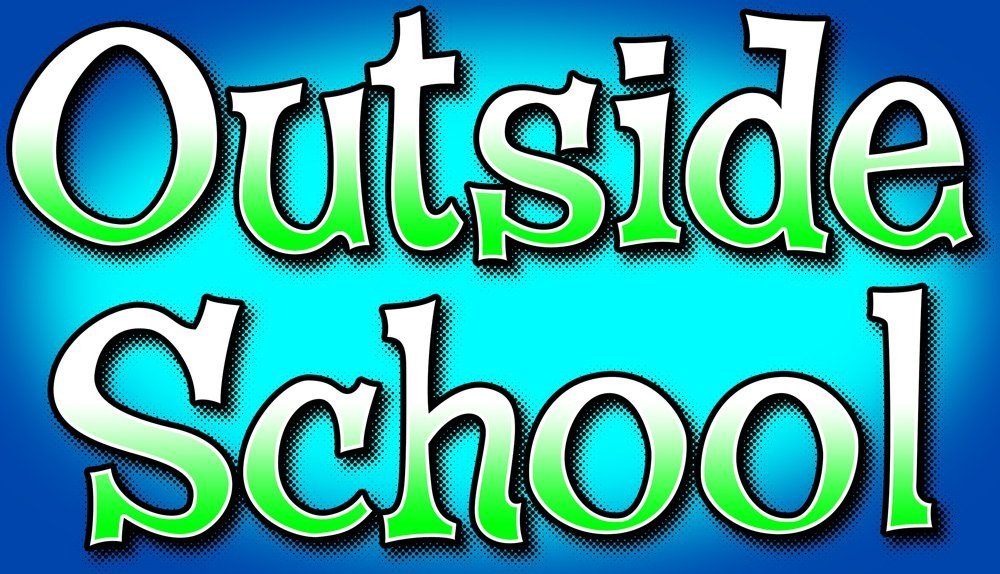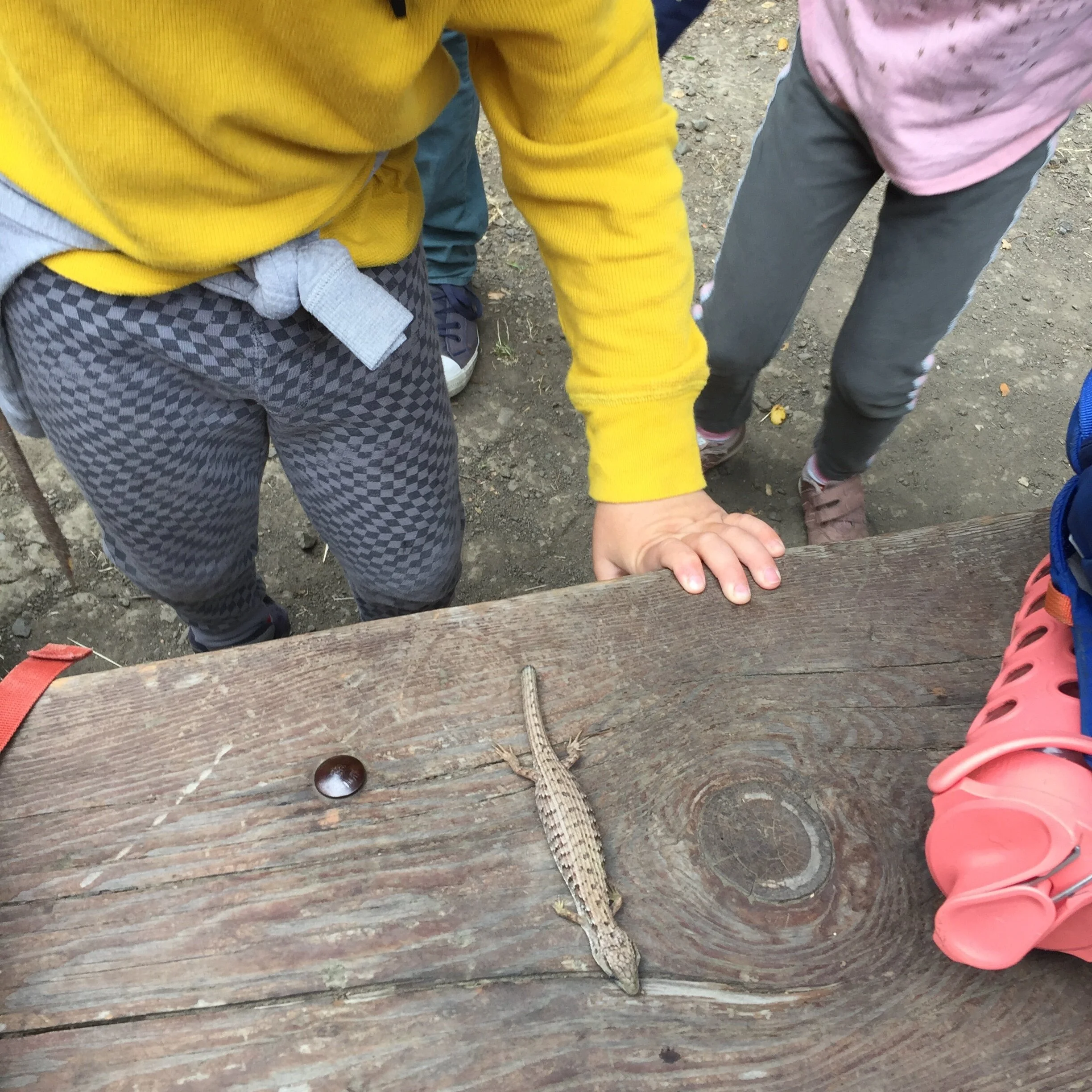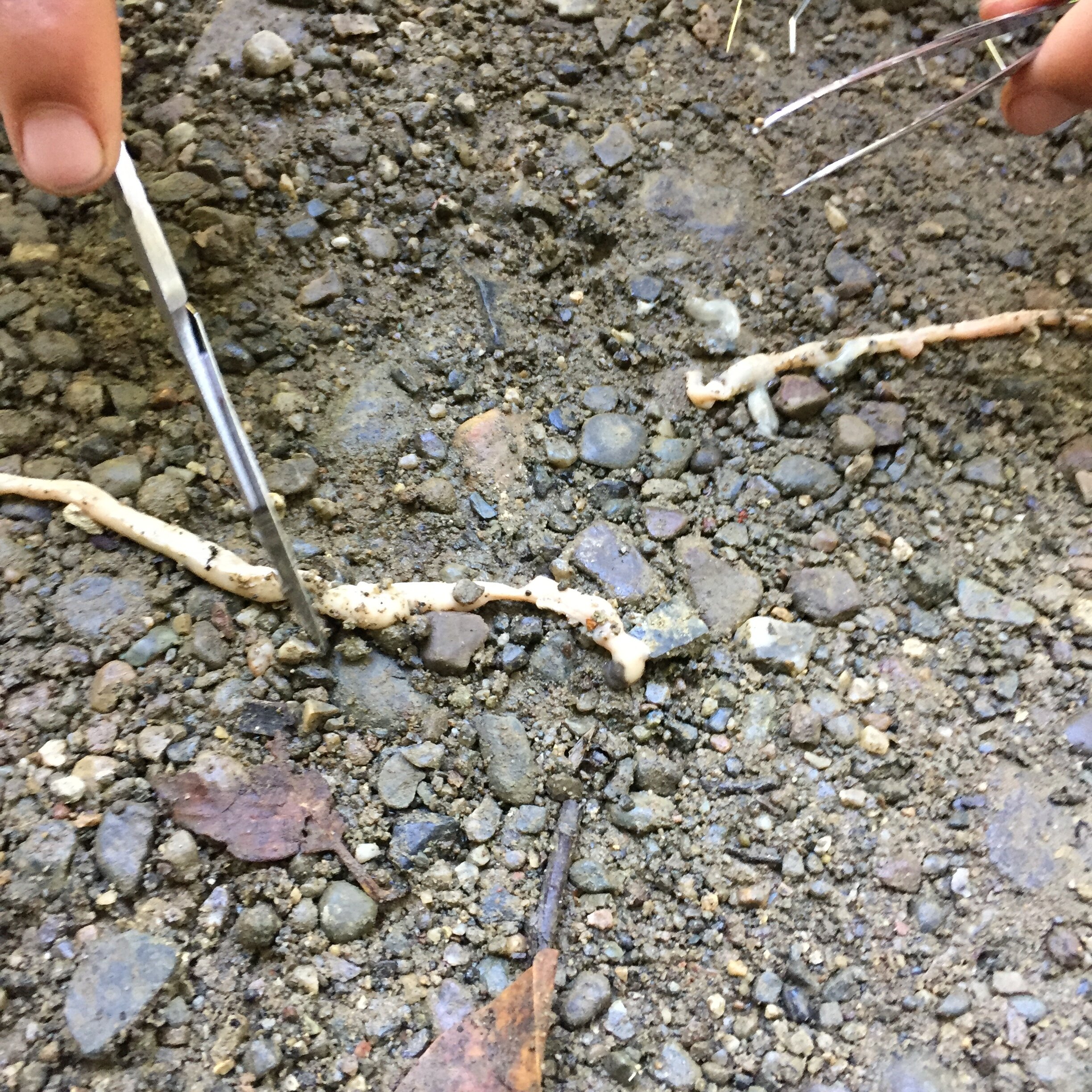Organic Teaching: Anatomy in the Wild
The best way my teaching has been described is “organic.” This honors the way I practice, with no preset curriculum nor notions of how the day will play out. Some days I’m merely the timekeeper, making sure we’re eating and drinking throughout the day, caring for our bodies, and making sure to get back to the parking lot on time. Other days I’m requested to help navigate tricky social situations, those rare instances in which the parties are not able to come to some conclusion on their own. Some days I get to share my love and passion for natural history. That can be in the form of favorite nonfiction tales of animals that’ve come into my life or stories that I know. “My Sister and the Growl,” has been a favorite and the kids enjoy asking to make certain noises or say certain words during each retelling. It may also be something that’s presented itself to us in the park. I invite you to check out a couple such instances below- two accounts below of how I taught anatomy in an organic way with children in an urban park. The stories are adapted from the email documentation I sent home to the families at the end of each week.
It takes effort to pay attention to individual and group needs, but the joy and wonder of allowing each day to unfold as it needs to is pure delight. Plus, “organic” is the perfect word… It’s all carbon based!
Raptors and Prey: Intestines
Raptors and prey was a common theme throughout the week, starting soon after the photo above was taken. Sara and the children all announced excitedly, "Heather! We found a worm!!!" When I first walked up to it under the water I thought it must be some sort of tapeworm (too much time spent in the lab for me!), but found instead that it was intestines. Julius carefully took it out of the water with a stick and set it down on a sandbar:
I used a stick to point out the anatomical features: liver, stomach, small intestine, large intestine, and cecum, which was about the same size as a rat's. Marlena wondered, "Who had this?", and we agreed that one way to find the answer would be to find out what the animal was eating. Thankfully I had a dissecting kit in my car and I used the probes, forceps, and scalpel to find out the answer: a bird (we were pretty sure)! What we thought were dead maggots on the stomach were actually larvae as stomach contents, as they were inside the small intestine as well. Children who were interested got to use the dissecting kit, too, and made the discovery that it really does start to smell like poop toward the end of the intestines. Oswald particularly loved getting to use the kit!
When we finished we returned the intestines to the creek. One of the other camp's counselors said they heard that human intestines could stretch the length of a football field. Over lunch, Ryan noted that if our intestines can stretch that length then the animal we found must have been very small. But our discoveries were not over...
The next day my husband and I were walking up into the park and noted a hawk being chased by birds. Julius and I watched scrub jays and American robins working through the grass before our morning meeting and thought they seemed to be about the same size as a rat. Another day we were looking from the side of the parking lot at a dead opossum. Sara peered down and saw a larva just like the ones in the intestines making its way across the asphalt under our feet. So cool to see one alive! And then finally today, again walking through the park before camp, I had seen a hawk in the midst of killing a rock pigeon. When the children and I snuck past later, the pigeon was still on the ground and the raptor nowhere to be seen, and by afternoon the pigeon was gone. I spent the better part of the morning scanning through our field guides (with kids coming over often to see my progress and "yeah" or "nay" my thoughts on identifying features) and came up with Cooper's hawk.
And a special shout out to Ryan this week for using my phone to document so many of our discoveries. Excellent volunteer and photographer!!!
Dead Lizard
What an honor to have "the best day(s) ever" with your kids this week! The dead lizard find was absolutely incredible and in the end became what I think was a beautiful and unforgettable experience. I'd like to recount the details from Tuesday here:
Oswald started off his morning by finding a dead lizard right in the middle of the path. He picked up its floppy body and carried it over to the picnic table and everybody got to get close looks.
He carried the lizard all the way to our meeting spot at Camp Acacia where we placed it on the grill for safekeeping during snack time and went to wash our hands before eating since so many had touched it. I happened to bring a book about a lamb tricking a wolf for reading to the kids after I finished eating my snack. I changed the male wolf to a female coyote and the lamb to a lizard for this particular reading. Every time I made a mistake in reading the book and said, "Lamb," or, "Wolf," the kids cracked up and corrected me, "You said LAMB (ha, ha, ha)!!!"
Each week there've been multiple opportunities for exploring "what's inside?" It's Marlena's favorite inquiry when we find something unusual! So we elected to walk to my car after snack to get the dissecting kit, which the kids who've been in camp multiple weeks remember from when we found the bird intestines in the creek. A lively discussion ensued when the kids talked about whether or not to bury the lizard when we were done. Since we saw a coyote right after we started walking to Acacia, I wondered whether it was supposed to be the coyote's breakfast but it had to abandon the meal when people started arriving. Votes were taken and it was decided to place the lizard above ground when we were finished. Darius wanted to create a beautiful altar. We also decided to bring the lizard back to near where we found it so that if it was the coyote's breakfast, at least it could have dinner later. Oswald found a beautiful location that was far enough from the trail that people's dogs wouldn't find it but close enough to its original location.
I love documenting everything with my phone and I knew I would be busy. Marlena, Oswald, and Sara all took turns taking photographs and were especially keen on videotaping, so they did all the documenting while my hands were working. Parents will be able to see a lot of their skills you see when they get your USB drives at the end of their children's time with me!
The kids couldn't wait for the dissection to start, and were restless as I pointed out the lizard's external features: eyes and mouth (both with copious quantities of dried blood which I was thankful for to ensure the lizard was in fact really, sincerely dead), ear holes (snakes have none), camouflaged (brown/grey), keeled scales on top of the body, and smooth, off-white belly scales. Next was its belly button and the cloaca. I pushed on the outside of the cloaca and saw a pink lump protrude- a female. A male would've had hemipenes (which look like a lumpy, pink "V"). I removed my tools from their organizer and placed the lizard upside-down and began to cut.
That's when we discovered just how slippery it was, so turned its body the other way so as not to keep sliding down toward me on the log as I worked; the scales run in one direction. We also discovered just how tough scales are. They were really hard to cut into and made a distinctive sound as they were sliced. Based on the intestines we found and dissected a couple weeks ago, the children were able to immediately identify the liver. I exposed the ribs and had the kids take some deep breaths and feel their own. At this point I learned how excited they were to see the heart. Cutting through the ribs revealed the tiny heart, and we all felt our own hearts beating as well. At this point some of the children left to tend to altar-making while others stayed with me. When I first cut through I had a suspicion, which at this point I was able to explore, the lizard was pregnant (gravid)! I was able to explain how, like how the male has hemipenes whereas a human has a penis, that female humans have one uterus part in the middle but that this lizard had a bi-lobed uterus. I was able to take out each embryo one by one, four in her right lobe and two in her left. She would've had six babies! I also explained that I thought this lizard would be ovoviviparous, meaning that instead of laying eggs (oviparous), or having a live birth like us humans from a placenta (viviparous), that this lizard had eggs within her uterus lobes that didn't have shells, but that she'd have a live birth. One of the children noted that their birth had been live, so I pointed out that all of us in the group had been the result of a live birth. I cut out one of the embryos in its sac, opened the sac, elegantly covered in blood vessels, and the beautiful, clear amniotic fluid came out. I teased out the tiny embryo with my dissecting probes. The large eyeball was the most prominent and Marlena proclaimed that it was smiling. I gently teased out the furled tail and the children were able to see its tiny feet. Truly amazing! Sara began dissecting the stomach to search for its contents but had me finish the job. Inside was some brown, dry, unidentifiable stuff along with a perfect, brown beetle.
At this point the children designated that it was time to move the process along to burial. Oswald put on a British accent and announced the royal leaves were arriving. These were for the embryos, each one placed in the center of a coast live oak leaf selected specially for each embryo. Then the royal wood arrived. I placed the organs back inside the lizard and they carefully placed it on the center of the wood. The children took it to their burial site and further debate ensued as to its placement, across or within the space? Within, of course! It was an absolutely perfect fit. These kids are genius at beautification. I took many photos and couldn't believe how gorgeous and reverential the display was. What an honor to be a part of this process.
Everyone was tired and we had an early lunch. The children voted to head to Roxaboxen (two of their play places have been named after this favorite book). They finished eating at different times, though, and began playing instead. About two hours later they realized they forgot to head out to Roxaboxen and should check in on the lizard and her offspring. The animals were drying out and ants were everywhere! One child noted that they shouldn't have put the altar near an ant tree, but in the end we decided there's no way to know which one may be an ant tree in advance and that the ants’ bellies got full. The lizard could still provide a snack to the coyote, with the skin providing keratin for its claws and fur, analogous to our nails and hair.
I'm so happy the kids showed their families and that Oswald's grandparents came on this very day!
The next morning the lizard was gone, while two very dry embryos remained with some ants, and by afternoon, embryos and ants disappeared altogether. That day I brought in two books that are very precious to me. The first is "The Legend of Larry the Lizard" by Peter Meinke. It was given to me for my birthday by my Ggma (great-grandma) and I've probably had it for about 40 years (she got too old to inscribe the books at some point but lived a fine, long life until I was well into my 20s). It's a long poem book about lizards gathering and playing in a band. I also brought in "Reptiles and Amphibians of the San Francisco Bay Region" by Robert C. Stebbins. It's from the '60s and I bought it second hand. Within it is the illustration I use as my logo for Teach Outside, granted by permission from UC Press and Bob Stebbins himself. We learned that ours was a northern alligator lizard (Gerrhonotus (now Elgaria) coeruleus), the only lizard other than the legless lizard in the Bay Area to give live birth, and that 6 or 7 young are most commonly produced.
In true "go big or go home" fashion, Marlena announced that she hopes we find a dead horse to dissect. Indeed, the kids are slightly obsessed with the idea of finding more dead animals to dissect and they at once want to and don't want to find a dead coyote.
Darius's dad, Zevon, was saying he appreciated my organic teaching style, and that's the best word I've ever been able to come up with for it, too. One must be outdoors, be prepared for anything, and have nothing planned to make this work. It's a weird, hard, and ultimately rewarding way to teach. Having a dissecting kit in the car "just in case," having taken herpetology in college and working in a herpetology lab, preparing Bio 1A labs at Cal where I killed pregnant rats and prepared demonstration dissections of them (they then went to feed raptors at the Lindsay Wildlife Museum) as well as chicken embryos, along with so many years of teaching (especially outdoors) uniquely prepared me for this experience. No one in any other school gets this sort of education. I am so proud of this day and of these kids. We all got so much out of this!
Note
It’s important to me that we look at these opportunities through a lens of curiosity and discovery. Showing disgust or even sadness would have limited these explorations.
By Heather Taylor, teachoutside@gmail.com. You are welcome to share all materials with credit to her.
































































































